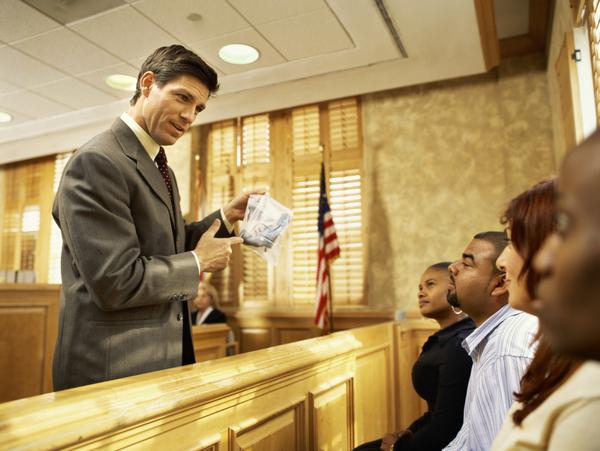How Trial Presentations Enhance Your Debate and Persuade Jurors
Trial presentations function as a pivotal mechanism for improving legal disagreements and encouraging jurors. By incorporating visual help, narrative structures, and emotional involvement, lawyers can develop a compelling situation that reverberates on several degrees. The calculated use of visuals not only clears up intricate information but additionally catches jurors' attention much more effectively than words alone. However, the art of narration plays a similarly critical duty in changing accurate proof into an engaging story, shaping jurors' perceptions - trial presentations. Understanding these elements can dramatically influence trial outcomes, increasing the concern of how each part adds to this detailed dynamic.

Significance of Visual Help
Aesthetic aids play a crucial duty in boosting the efficiency of trial presentations, as they can significantly raise audience interaction and retention of information. In the context of a test, where jurors are charged with processing complex info, aesthetic aids serve to streamline and make clear bottom lines. Charts, charts, and photos can convey information and principles that may or else overwhelm or perplex jurors, enabling for a more simple understanding of the proof offered.
Additionally, visual aids help in keeping juror interest throughout the procedures. By damaging the monotony of verbal testimony, these tools can stress vital arguments, making them much more memorable. Reliable aesthetic help can likewise evoke emotional responses, which can be critical in encouraging jurors to line up with the presenter's story.

Crafting Engaging Narratives
A compelling story is necessary in test discussions, as it functions as the backbone of effective persuasion. It allows lawyers to weave together truths, proof, and psychological aspects right into a systematic story that reverberates with jurors. This narrative structure makes it possible for jurors to comprehend the complexities of the case while guiding them through the attorney's argument.
To craft a compelling narrative, attorneys need to concentrate on clearness and comprehensibility. Additionally, the use of vivid descriptions can produce psychological photos that assist jurors picture the events, making the narrative extra unforgettable.
Additionally, incorporating essential styles throughout the presentation strengthens the core message and aids in retention - trial presentations. The narrative should not only convey information but also evoke a feeling of justice, highlighting the stakes entailed. Inevitably, a sound narrative promotes a connection in between the jurors and the situation, positioning the lawyer's argument as both trustworthy and engaging, thus increasing the possibility of a beneficial judgment

Involving the Court Emotionally
Effective court interaction hinges on the attorney's capability to attach with jurors on a psychological level. This link can considerably influence jurors' assumptions and their utmost decision-making.
Aesthetic help, such as pictures or video clips, can additionally boost psychological interaction, providing jurors with brilliant representations of the situation's human elements. Crafting a narrative that highlights the struggles and triumphs of the people involved moved here makes certain that jurors see beyond the legal arguments and identify the human consequences of their decisions.
Additionally, tone and body language play an important duty in conveying emotion. A lawyer's passionate shipment can resonate with jurors, reinforcing their psychological financial investment in the case. It's important to stabilize sob stories with valid proof, ensuring that jurors feel forced to act while remaining grounded in the reality. Ultimately, an emotionally engaged jury is more probable to be convinced, making psychological connection a vital element of efficient test discussions.
Structuring Your Discussion

The body of the discussion should be realistically fractional into key points, each sustained by compelling proof. It is helpful to utilize narration techniques to weave truths into a narrative that jurors can quickly comply with. Aesthetic help, such as graphes and videos, can improve understanding and engagement, helping to highlight essential pieces of evidence.
Real-World Situation Research Studies
Examining real-world study supplies vital understandings into the art of test discussions and persuasion. The site instance of "O.J. Simpson v. The Individuals of California" shows exactly how aesthetic aids and engaging narratives can sway jury assumptions. The protection group effectively used a strategy that combined prominent expert testimonies with multimedia presentations, which mesmerized jurors and inevitably influenced their choice.
Another significant example is the "McDonald's Coffee Case," where the complainant's lawyers utilized visuals pictures of the injuries suffered by Stella Liebeck. trial view presentations. This raw visual proof played a crucial function in conveying the severity of her burns, resulting in a significant court award. Such cases demonstrate that impactful test presentations usually rest on the efficient combination of visuals and storytelling to stimulate psychological actions from jurors
Furthermore, the "Casey Anthony Trial" highlighted the value of narrative comprehensibility and reliability. The prosecution's failure to establish a compelling timeline lessened their persuasive power, highlighting the requirement link of a well-structured presentation. Analyzing these situations discloses that successful trial discussions call for critical preparation, psychological involvement, and the capacity to resonate with jurors' worths and beliefs.
Conclusion
Trial discussions substantially boost debates and encourage jurors with the critical use of aesthetic aids, engaging stories, and emotional engagement. A well-structured discussion equilibriums emotional charms with factual evidence, eventually reverberating with jurors' worths.